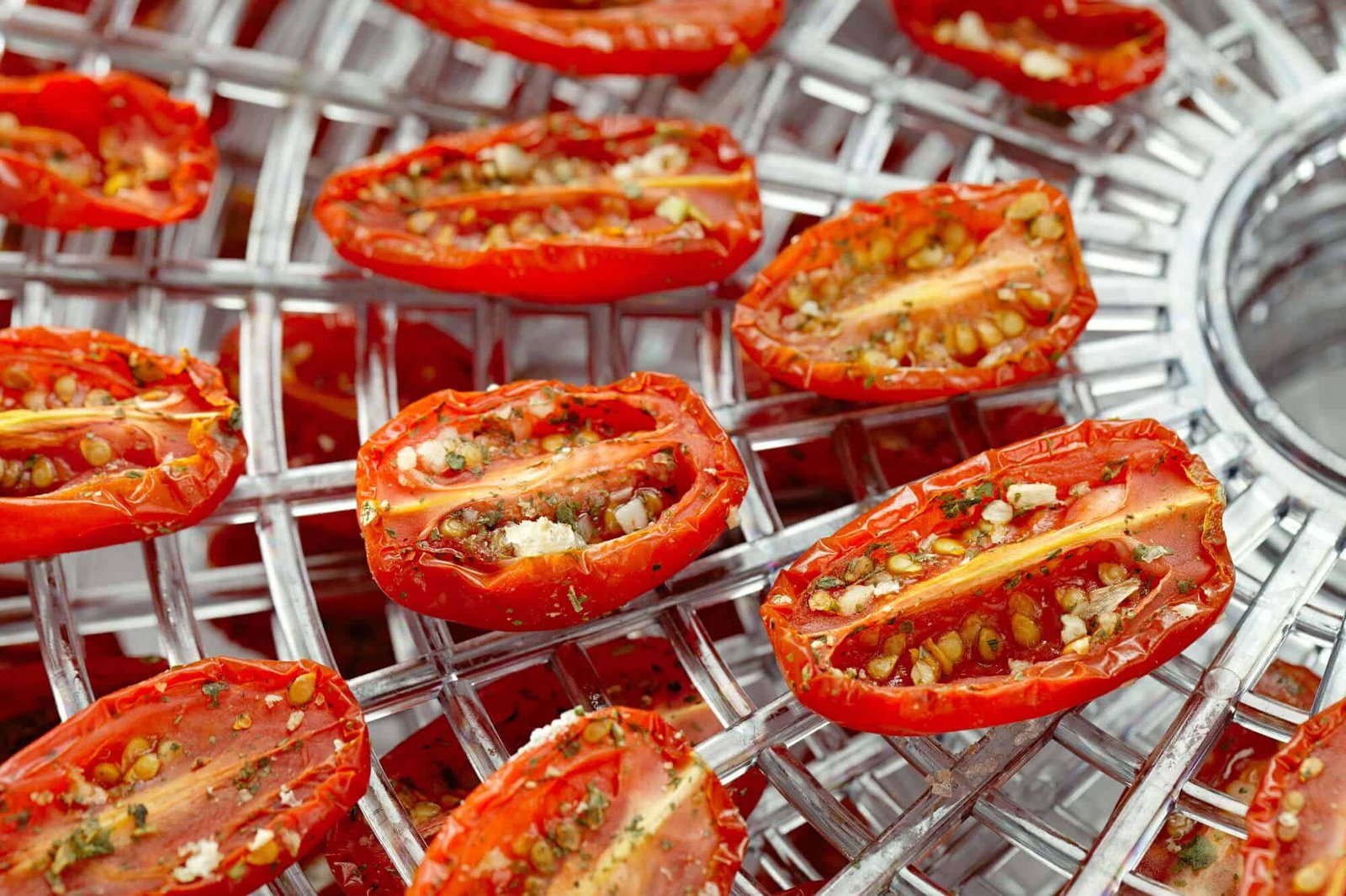Are you considering using a dehydrator to preserve food and save money? Dehydrators are great for making food last longer. Do the savings from shelf life exceed or break even with the cost of running this machine?
An electric dehydrator is a great piece of kitchen equipment, but there’s often a concern of how much electricity they use. To learn more about dehydrating foods and how much electricity it requires, read on.
Understanding Electricity
To find out how efficient dehydrators are, it helps to know a little bit about measuring electricity.
Electricity is measured in small units called watts. Because appliances use so many watts, their energy usage is usually measured in kilowatts. A kilowatt is one thousand watts.
Power companies measure energy use in kilowatt hours. A kilowatt-hour is the amount of electricity (in kilowatts) used during one hour.
To calculate kilowatt-hours (kWh), we use a simple formula:
kilowatt hours (kWh) = wattage of appliance X the time in hours / 1,000
For a 1,000 watt appliance that is run for 8 hours, the formula looks like this:
1,000 watts X 8 hours / 1,000 = 8 kilowatt hours (kWh)
Calculating Cost
After you calculate the kilowatt hours, you must find out the cost per kWh. Your electricity bill should show the kilowatt hours used and the cost per kWh.
To calculate the electricity cost of running your appliance, simply multiply the appliance’s kWh by the cost per kWh, like this:
Cost to run appliance = kWh X cost per kWh
This formula lets you easily calculate how much it costs to run your dehydrator.
Does a dehydrator use a lot of electricity? Let’s find out more below!
How Much Does Using a Dehydrator Cost?
So, how much electricity does a dehydrator use? Well, it really depends on the model. Here’s a simple rule of thumb though: the bigger the dehydrator, the more electricity it tends to consume. Yes, that’s right! Just like anything else that heats up or cools down, the size, capacity and make of your food dehydrator will impact its power consumption.
Food dehydration is a low-temperature process that uses a fan and heating element to remove moisture from food. It’s kind of like a mini oven with fans! Most dehydrators run between 500 to 750 watts per hour, but this can vary. Some high-end models might use a bit higher, around 1000 watts per hour.
Most people use an electric dehydrator to save money and waste less food. How does a food dehydrator work? These appliances slowly remove moisture from food while preserving its nutrient content and taste.
Dehydrating is a great way to make food last a lot longer, which is especially helpful with fruits and vegetables. But do the savings exceed the cost of running a dehydrator?
Most food dehydrators will cost between $0.29 and $1.20 to run for a ten hour period. How much electricity each one uses depends on the size and included features of the model.
Special Features
Some dehydrators have features that conserve electricity. These features can include:
- Internal regulators that turn the fan and heater off periodically while holding heat
- Temperature control settings
- Removable trays so you only have to use enough space for the amount you’re drying
Other dehydrators may use more electricity due to size or running times. It’s best to consider your drying needs and then pick the model with the appropriate features. If you’ll be drying large amounts frequently, it might be a good idea to invest in a bigger, more advanced dehydrator.
Tips to Save Money on Your Dehydrator’s Energy Usage
Worried about how much electricity a dehydrator uses? Don’t fret! Here are some hot-off-the-trays tips to help reduce your dehydrator’s power consumption and, consequently, your electric bill.
1. Maximize Space: Many might ask, does a dehydrator use a lot of electricity? The answer is, it can, especially if not used effectively. So, make the most of your dehydrator’s space! Try to fill up all the trays each time you use it. In a sense, it’s a lot like carpooling – you use about the same amount of energy, but accomplish more in the process.
2. Preparation Matters: The size, thickness, and water content of the foods you’re planning to dehydrate can significantly affect dehydration times! Thin cuts shorten the drying process, while reducing moisture content can prevent your dehydrator from having to work as hard. The less work your food dehydrator has to do, the less electricity it uses, thus lowering your electrical bill.
3. Maintaining Temperature: Remember, high temperatures don’t always mean quicker results! Foods dehydrated at low temperatures might take a bit longer, but the cost remains the same or could even be a lot cheaper. Plus, keeping your temperature steady can help retain the food’s nutritional content better – a double win!
4. Air Circulation: Ensure the warm air circulated by the dehydrator has space to escape. Good air flow shortens drying time and lessens the need for high-temperature settings.
“Keeping an eye on these details, you can turn the question ‘Do food dehydrators use a lot of electricity?‘ into a statement: “My food dehydrator doesn’t consume as much electricity.’
5. Make Use of Residual Heat: Once the dehydration process is done, turn off the dehydrator and leave the food inside for a while. The remaining warmth will continue to dehydrate foods, and this simple step could save you significant amounts of power in the long run.
Following these steps, you’ll see a significant decrease in your dehydrator’s electricity usage, ensuring the cost of running your dehydrator is minimized. Voila! Intentional dehydration for a purposeful pantry, cost-effective, and, most importantly, achievable at less cost to the planet and your electricity bill.
Comparing the Energy Efficiency of Different Food Dehydrators
Not all food dehydrators are created equal! Indeed, the energy consumption can vary greatly between different models, which directly impacts your electricity bill.
The first key factor that can influence the electricity usage of a food dehydrator is the heating element. A powerful heating element might heat up more quickly and dehydrate food at a quicker pace, but it can also consume more electricity per hour. Similarly, a smaller or less powerful heating element might consume less electricity but take a bit longer to dehydrate foods.
Another factor to consider is air circulation. Models with proper air circulation might consume less electricity because the warm air is distributed evenly, reducing the amount of time necessary to remove moisture from the food.
Buy Energy Plugs to Monitor Dehydrator Running Cost
Why keep wondering about the cost of running your food dehydrator when you can simply monitor it? Indeed, we live in an amazing digital age, folks! You can actually keep track of your dehydrator’s electricity usage in real time by investing in a simple device known as an energy plug.
Energy plugs are small appliances meant to measure the power consumption of any device connected to them. They are quite easy to use; simply plug the energy plug into your wall socket and then plug your food dehydrator into the energy plug. It records the power consumption and you can check it out any time, providing clarity on your dehydrator’s exact electricity usage.
“So, how does this save money?” You might ask. Well, once you’re aware of your dehydrator’s electricity consumption, you can adjust the way you use the appliance. You might choose shorter dehydration times, or perhaps fill every tray to its maximum capacity to make the most of the energy consumed per dehydration cycle. The data from the energy plug will provide you with the necessary information to make your food dehydration process more cost-effective!
Save More, Waste Less
Let’s wrap this up! Using a food dehydrator can be a surprisingly efficient method for preserving your favorite fruits, vegetables, meats, and herbs. Instead of worrying about how much electricity a dehydrator uses, or whether a food dehydrator consumes a lot of electricity, it’s important to remember that the cost of running such appliances is usually a lot cheaper than you might expect. Sun drying might come up in conversations as a cheaper alternative, but who can really control the sun? Plus, dehydration times can be quite lengthy!
With today’s technology, quite a few food dehydrators don’t use a lot of electricity. The secret lies within their design as the heating element, fan, and air circulation work together at low temperatures to slowly remove moisture from your food.
You might even consider investing in energy plugs to monitor the power consumption of your dehydrator, this way you can keep an eye on your electricity bill. Every kilowatt-hour counts, right?
Using a dehydrator is a cost-effective way to make great snacks and preserve foods that tend to spoil quickly.
If you’d like to learn more about electric dehydrators and dehydrating food, our website is full of great information and tips. Feel free to explore our posts to find the best dehydrators for all of your kitchen needs.

